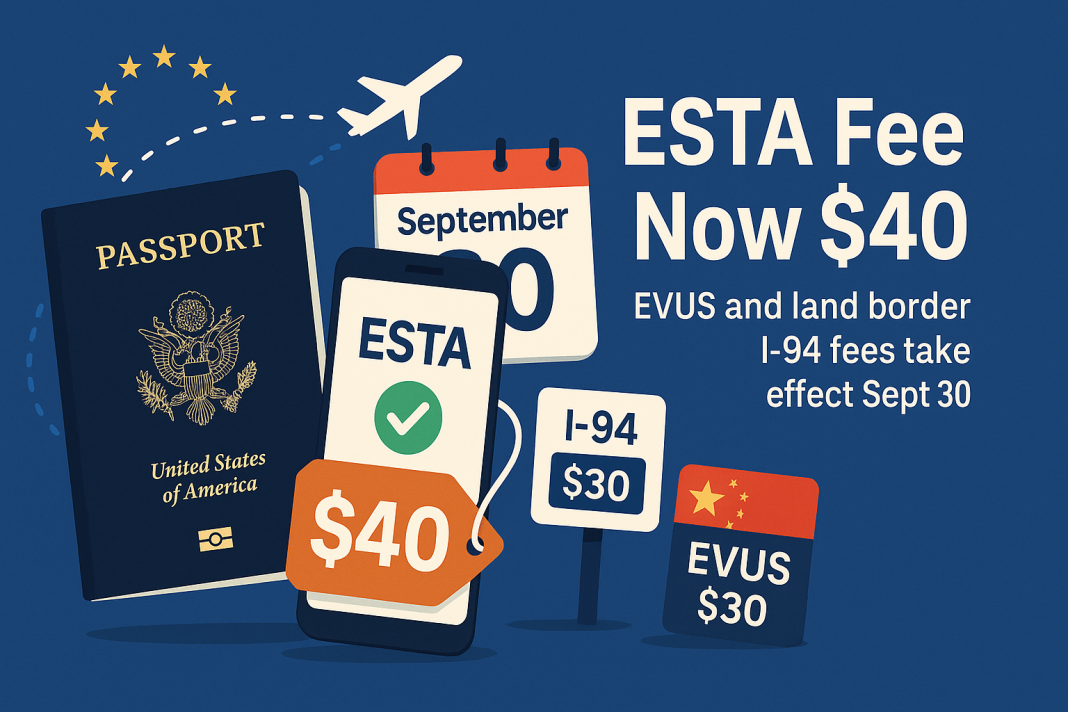Beginning September 30, 2025, the United States will implement higher entry-related fees, led by a near-doubling of the ESTA charge. The changes also add a fee to EVUS and raise the cost of the paper I-94 at land borders.
The United States will raise the Electronic System for Travel Authorization fee to $40 on September 30, 2025. On the same date, Customs and Border Protection will begin charging $30 for Electronic Visa Update System enrolment and will bring the total fee for the land border I-94 to $30. The measures apply nationwide and affect most European travelers who rely on the Visa Waiver Program for short visits.
According to federal notices and agency updates, the ESTA increase reflects a new statutory minimum alongside existing components of the charge. EVUS, which applies to nationals of China holding 10-year B-1/B-2, B-1 or B-2 visas, will carry a fee for the first time. The I-94 increase is limited to entries at land ports, while air and sea arrivals continue to receive electronic admission records without an I-94 fee.
For travelers in Europe, the timing matters. Families and frequent visitors appear most exposed to higher costs, although ESTA approvals remain valid for two years or until the passport expires.
The shift also lands as the EU advances its own pre-travel systems, including plans to tighten pre-entry screening through ETIAS, and as Brussels keeps an eye on visa reciprocity with the US.
What changes on September 30
The ESTA fee becomes $40 for Visa Waiver Program travel used by nationals of most EU and Schengen countries. EVUS enrolment, required for eligible Chinese visitors with long-validity B-category visas, will cost $30. For land entries, CBP will add $24 to the existing $6 I-94 charge, bringing it to $30 in total and payable per traveler at the border.
All unpaid ESTA applications in the system after the system update on September 30, 2025, will be subject to the new fee amount of $40.
Why the US is increasing fees
The changes stem from budget legislation that directs DHS to collect additional revenue for travel systems and border operations. The law authorizes annual inflation-based adjustments from fiscal year 2026, so fees can move again in future years.
Europe is moving in the same direction. The EU’s new pre-travel authorisation, ETIAS, will cost €20 when introduced, with rollout currently planned for 2026, as reported by SchengenVisaInfo.
What travelers should do
If you plan to visit after late September, consider applying for ESTA before the new price takes effect to lock in the current rate, provided your passport will remain valid. Check whether your itinerary involves a land border crossing with Canada or Mexico, since the I-94 fee applies at those ports. Chinese nationals with 10-year B-category visas should budget for the new EVUS cost when completing mandatory enrolment.
